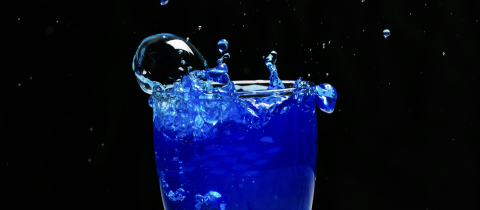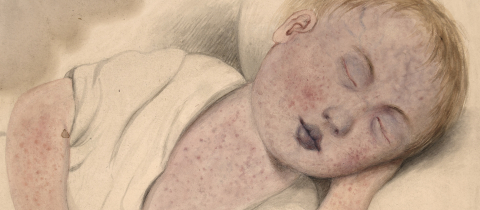This article was first published in The Skeptical Inquirer.
I haven’t gone trick or treating in over a decade, but I still vividly remember my fear and anxiety around Halloween candy. I remember double-checking every piece to make sure it was sealed and throwing away anything that wasn’t. I remember that the neighbors who gave cans of soda were my favorite to visit, not only because I loved pop but also because it was nearly impossible for a can to be opened or tampered with and maintain its pressure.
Halloween sadism is the idea that a stranger would try to hurt trick or treaters by adding poisons or sharp objects to their candy. I remember the first time my mom told me about it. I was around six years old, and as she was tucking me into bed we got to talking about Halloween and razor blades in apples. I was instantly terrified, and when I expressed this, my mom tried to backtrack and explain that it was just a story; it didn’t really happen.
Whether she was just trying to comfort me or she truly believed it was only a legend, my mom was correct. These kinds of things really don’t happen. In more than thirty-five years of searching, Dr. Joel Best, a professor of sociology and criminal justice from the University of Delaware, has failed to find a single “substantiated report of a child being killed or seriously injured by a contaminated treat picked up in the course of trick-or-treating.”
There are a few incidents that come close to making this myth a reality, but the devil is in the details. For instance, eight-year-old Timothy O’Bryan died in 1974 after eating Halloween candy laced with cyanide, but he didn’t get it trick-or-treating. Rather, he was given the candy by his father, who had recently taken out a large life insurance claim on his son. In 1964, Helen Pfeil gave bags containing steel wool, dog biscuits, and insect traps (all marked as such) to children she felt were too old to be trick-or-treating. No one was injured, but because the insect traps contained poisons, she was arrested and tried for child endangerment nonetheless. More nefariously, in 1959 Willliam V. Shyne of California handed out laxative-laced candy to trick-or-treaters. Thirty kids became ill, but none seriously so.
All of these cases stoke the fears of Halloween sadism, even though they are not true instances of the phenomenon. Interestingly, the specifics of how strangers are supposed to try to harm children on Halloween seem to reflect the cultural anxieties of the moment. For example, after the Chicago Tylenol murders of 1982, fears were of poisoned candy, whereas after 9/11 the fears morphed to include terrorists bombing public places on Halloween. In recent years, as marijuana legalization has hit several states and Canada, fears of children receiving edibles in their candy bag abound, and I would not be surprised if rumors of people intentionally covering candy in the SARS-CoV-2 virus pop up soon. Wrapped and sealed candy was popularized in the first place by the polio epidemic, as parents were worried their kids would contract the paralyzing virus from contaminated chocolate. (Because the poliovirus is spread through the feces of those infected, this was never a risk unless the chocolatiers were exceptionally unhygienic.)
One way institutions have tried to mitigate fears of Halloween sadism is by offering candy X-rays. As recently as 2019, several clinics and hospitals in the U.S. offered this service. The idea was that any metallic objects, such as needles, razor blades, or pins, would show up on X-rays, and the tampered treat could then be safely thrown away. Practically, however, these programs have failed to ever detect a legitimate metal contaminant. Indeed, when researchers tested the X-ray method by putting a needle into a candy apple and sending it, via participants’ candy bags, to participating health centers, one of them failed to detect the needle at all.
One could argue that even though no child has ever been seriously injured or killed by a metal-containing candy bar, and even though they’re not perfect, X-ray programs are worth it for the peace of mind they can bring to parents. Unfortunately, that argument overlooks the high costs of a program like this. In 1988, Dr. Jerry Calvanese from the Washoe Medical Center in Reno Nevada queried local hospitals running candy X-ray programs and determined that the average cost of x-raying one bag of candy was $3.38. Adjusting for inflation, that’s $8.03 per bag. Multiply this cost with the estimated 74 million children under age seventeen in the United States, and a national candy-screening program would cost billions.
Outside of monetary costs, X-ray programs also take up the time of X-ray technicians and other staff, as well as time on the X-ray machine that could be used for patients. Such programs could also leave a hospital liable to litigation if any of the candy they deem “safe” turns out not to be, even though X-rays can only detect radiolucent objects, not poisons, toxins, or other contaminants. Luckily, programs like this seem to be disappearing. I couldn’t find any being offered in 2020, although that may have more to do with COVID-19 than changing beliefs in dangerous candy.
Unfortunately, 2020 has the potential to revitalize worries of Halloween sadism in a serious way. Not only are we in the midst of a global pandemic that has heightened our fears for our own and loved ones’ safety, but the hit Halloween film this year is The Witches, an adaptation of a Roald Dahl novel that is literally about witches poisoning candy to kill children (or turn them into mice in this adaptation).
I am not a parent, and I am not a child, so I will be taking no part in whatever forms of socially distanced trick-or-treating occur this year. However, if you’ll allow me, I do have some advice for those who are.
You probably don’t need to bleach your kids’ candy.
Although research on how SARS-CoV-2 spreads is still being done, there seems to be a consensus emerging that fomites, or surfaces on which the virus is sitting, play a very small role. If you are nonetheless greatly concerned about Halloween candy as a potential vector for COVID-19, rather than cleaning every individual chocolate bar, consider quarantining the candy for several days to a week instead.
You probably don’t need to check your kids’ candy to ensure it is all sealed and safe.
Given the lack of credible cases of children getting sick or dying from Halloween candy, you’re likely just wasting your time picking through your kids’ stash. Still, if you do want to be sure, there’s no harm in checking so long as you don’t scare your children with horrific stories of Halloween sadists while you do. I do not think I am unique in that these stories made a big impact on my childhood. Halloween should be a fun time for mischief and chocolate, not an event predicated on fear. You want your child to be safe, of course, but you can give them advice and rules to follow without traumatizing them in the process.
Focus on the real danger to children on Halloween: cars and sugar.
Pedestrian deaths for children aged five to fourteen in the United States quadruple on Halloween. Trick-or-treaters are often excited and distractable. Couple this with an all-black costume, and you have the perfect recipe for a car accident.
Rather than telling children false tales of poisoned candy and razor blades in apples, teach them that cars pose a serious threat to pedestrians and that they need to be more aware of traffic on holidays, when drivers are likely paying less attention than usual to the road.
October 31 can also act as a good opportunity to teach kids about nutrition. Childhood obesity and related conditions are an ever-increasing concern in North America. Studies have shown that focusing on weight and using scare tactics can lead to negative outcomes for both physical and mental health. Demonizing sugar and candy in absolute terms is a bad idea. However, an open conversation about how it’s important to have a varied diet and to try to balance eating healthier and less healthy foods can help your children understand why eating their entire candy haul in one day is a bad idea. And, if they end up with chocolate-induced stomachaches anyway, it’ll only drive your point home.
Oh, and wear a mask.







